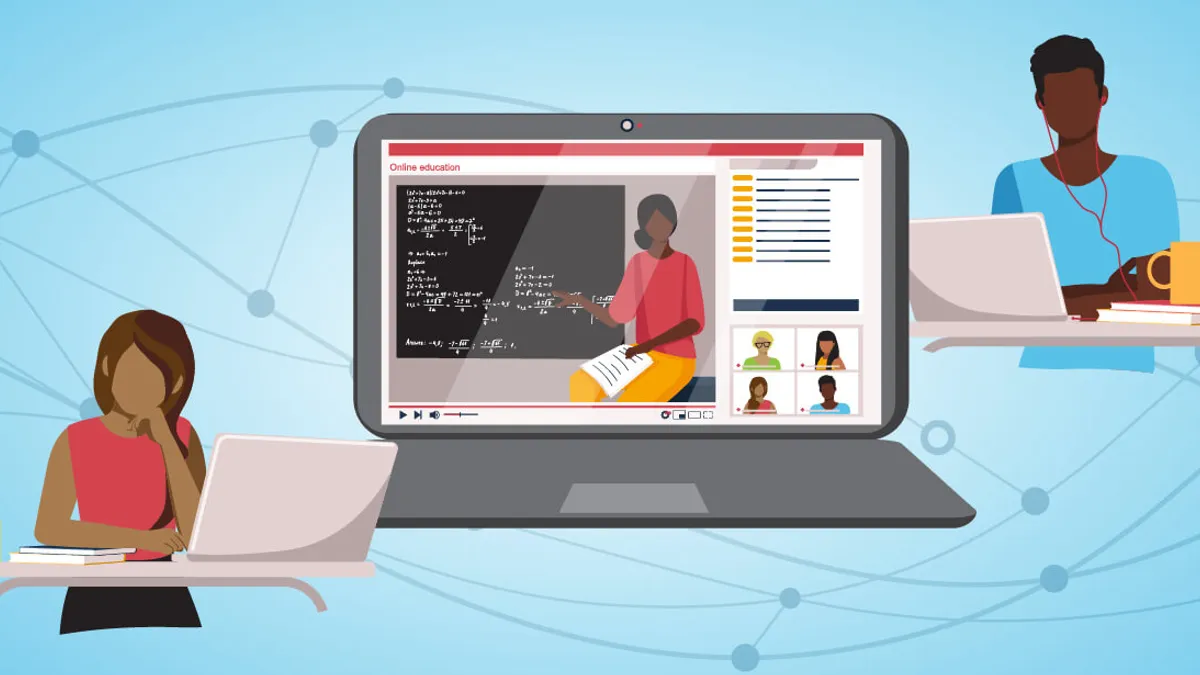Much to everyone's concern, the Delta variant is rapidly spreading in the U.S. – and it's causing higher ed leaders to question whether they must alter their autumn semester plans. Some colleges are requiring vaccines or reimposing mask mandates. Others are finding their authority to impose mitigation measures limited by state-level policies.
In a nutshell, institutional leaders face great ambiguity this fall semester. How can they best operate their organizations and deliver learning to all students, while maintaining compliance with state laws – and keeping everyone safe and healthy?
The answer: Schools must prepare now to offer non-residential learning delivery options, like hybrid or fully online learning, in the fall and winter. If they don't, students will be frustrated by schools that scramble to offer last-minute remote learning, and faculty will inevitably feel burned out.
8 ways higher ed can improve online and remote learning
To prepare, we recommend schools focus on bolstering the following eight technologies and activities (and their related support teams) that directly improve student experiences and ensure more effective remote learning outcomes:
1. High-quality audiovisual (A/V) equipment and its associated IT labor
First and foremost, students need to be able to clearly see, hear and participate in class – no matter how classes are held. They can't do that if the cameras, microphones, speakers and computers that are supposed to be connecting them are outdated or nonexistent. When problems arise, IT professionals need to be ready to step in for fast troubleshooting support.
2. Synchronous web conferencing system
To further enhance the classroom experience, students should be able to access high-quality video streaming and live chat to remotely attend class and interact in real-time.
3. Video platform service
Some students will prefer to participate asynchronously all the time. They must be able to easily search, access and watch recorded content.
4. Online course platform
A learning management system (LMS) with all course content and materials should be in place for both online and on-ground programs to access.
5. Electronic proctoring technology
Your school should have a secure way to administer assessments and ensure their academic integrity.
6. Remote connectivity
To ensure students can always access the digital classroom, your institution should consider increasing its internet bandwidth, providing redundant internet connections and offering loaner laptops to students (when needed).
7. 24/7, on-demand tech support
If an online or hybrid learner has a technical issue, your school should have an IT help desk to quickly help them resolve it – anytime, anywhere and through any modality.
8. Faculty training and support
Your faculty should feel comfortable and supported using all of this technology to create engaging learning experiences in different modalities. Without faculty support, the student experience will suffer.
Ensure learning continuity no matter the circumstances
Start preparing now to offer non-residential learning delivery options, like hybrid or fully online learning. Many students whose classes went online when the pandemic began felt unhappy and shortchanged by their experiences, citing lack of engagement, isolation, IT issues and less time in class. With no guarantee of a COVID-19-free semester or year, colleges and universities must be ready for a fast transition to online and hybrid learning. And this time, student expectations around quality are higher.
If your institution needs help offering learning delivery models that are flexible, responsive to students and enabled by technology, Collegis Education can help. We offer the course design and development, technologies and tools and delivery optimization to ensure all learning outcomes are met, course offerings are accessible and multi-modal and students and faculty are supported.











